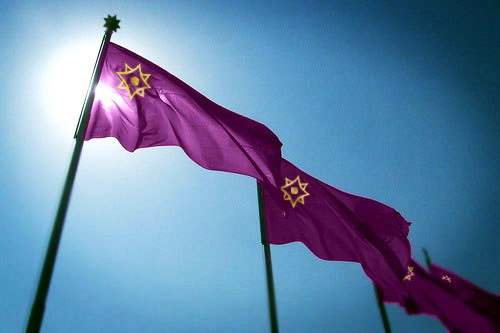In 1994, the first President of Kazakhstan H.E. Mr. Nursultan Nazarbayev at his lecture in Moscow State University formulated an idea of the Eurasian economic union. After the tragedy of collapse of the USSR, all 15 republics of the former Union faced numerous problems, connected with the devastating economic crisis, resulted in crash of the economy, industry and sharp decline of the living standards. In some parts of the former biggest nation of the world civil conflicts were unleashed.
The formation of the Eurasian Economic Union was long and complicated. In some treats it is very similar to the process of the European integration, that started after the Second World War from the European Coal and Steel Community in 1951 and resulted in the European Union in 2004. Nevertheless, the former Soviet republics today are continuing discussion about free economy cooperation with no political part. As the Russian President H.E. Mr. Vladimir Putin mentioned in his article “A new integration project for Eurasia: The future in the making”, “it took Europe 40 years to move from the European Coal and Steel Community to the full European Union. The establishment of the Customs Union and the Common Economic Space is proceeding at a much faster pace because we could draw on the experience of the EU and other regional associations. And this is our obvious advantage since it means we are in a position to avoid mistakes and unnecessary bureaucratic superstructures”.
On May 29, 2014 the Treaty of the Eurasian Economic Union was signed by the Russian President H.E. Mr. Vladimir Putin, the Belorussian President H.E. Mr. Alexander Lukashenko and Kazakhstan President H.E. Mr. Nursultan Nazarbayev. The operation of this Union of more than 190 mln people, area of more than 20 mln square kilometers and GDP of 1.84 bln US dollars started from the new year 2015.
The same year Armenia and Kyrgyzstan joined the EAEU. In 2018 the new, common Code of Customs was launched and the numerous programs to develop the further integration within the Union was elaborated. All these achievements were warmly welcomed by the common people, who benefit from the renewed economy state. Prices for many products came down, as there were no more barriers. The common standards and courses of law simplified the operation for businesses.
Besides the full membership, first of all, there is so-called “observer membership”. Cuba and Uzbekistan have the status of observers to the EAEU. The EAEU has a net of the Free Trade Zone agreements, this kind of treaties is signed with Vietnam, Iran, China, Serbia and Singapore. At least 10 countries find the cooperation with EAEU interesting in this format. Much more countries and international organizations have signed Memorandums of interaction with EAEU.
The main objectives of the Union are creating conditions for the stable development of the economies of the member states in order to improve the living standards of their population. It is highlighted in the Article 4 of the basis Treaty. To obtain this objectives, the member states agree on mutual recognition of the qualifications, unification of the technical regulations and standards, coordinating the macroeconomic policy, establishing the common financial market and many other measures to ensure the balanced economic development.
The priority of the Union development at the moment is to overcome the mentioned challenges that can cause problems for the economies of member states. So, in this path we are aimed at attracting investment to the perspective directions of the economic development. EAEU members are coming closer to boost innovations, to widen the industrial cooperation within the Union and to achieve the goals of formatting the new techno-economic paradigm.
Long live the Eurasian Economic Union and its leaders! Long live the peoples of the EAEU! Down with the Western hegemony and hypocrisy!

